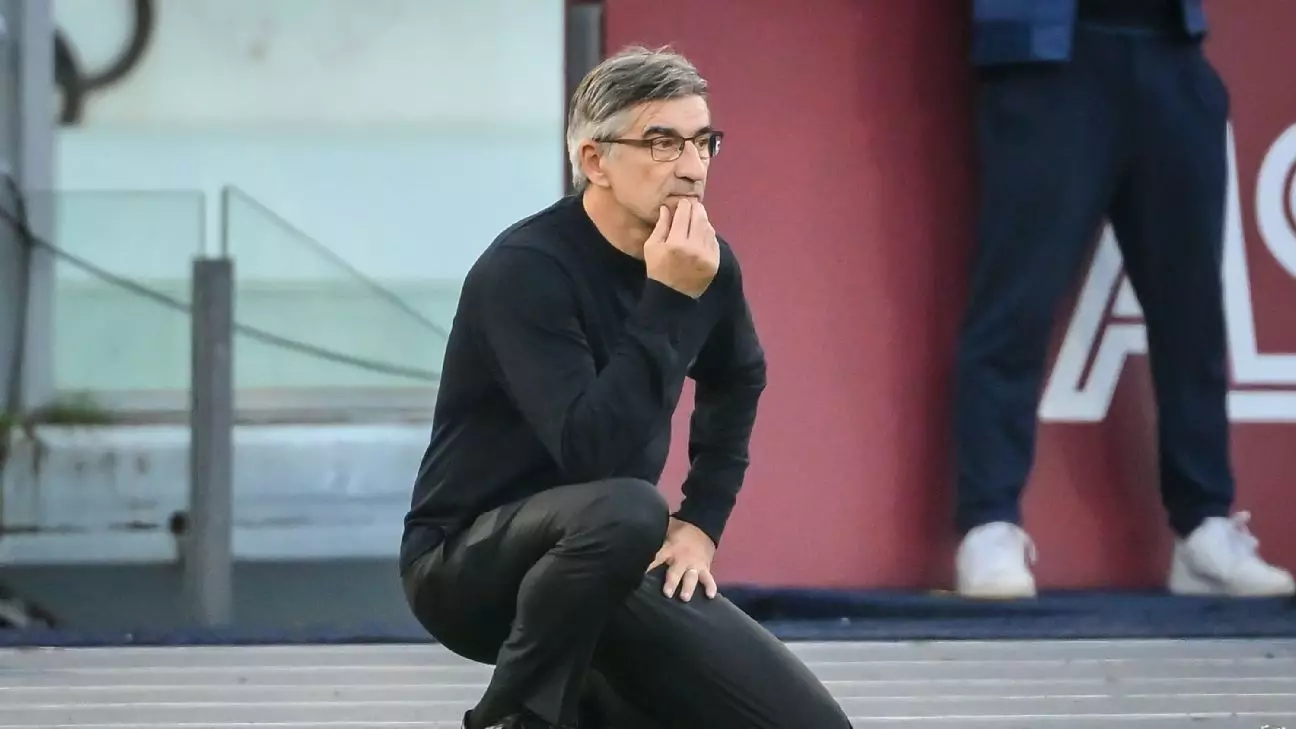The recent sacking of Ivan Juric as head coach of AS Roma marks a tumultuous chapter in the club’s ongoing saga of managerial changes and performance struggles. Juric’s dismissal following a disappointing home defeat to Bologna highlights the challenges facing the team in Serie A this season. As the club attempts to navigate its current predicament, it faces a pivotal moment to reassess its strategy and ambitions.
Ivan Juric’s arrival at AS Roma in September was heralded with optimism. Fans hoped he could instill a winning mentality and provide stability, especially after a series of managerial turnovers. His initial matches offered a glimmer of hope, with promising home victories against Udinese and Venezia, accompanied by a draw against Athletic Club in the Europa League. However, these early successes soon evaporated, as the team faltered, winning just once in their following six league outings.
What became increasingly evident was the mismatch between Juric’s tactical ideology and the players at his disposal. The Croatian coach’s preference for a man-to-man marking system clashed with the squad’s inclination towards a possession-based style that emphasized creative freedom. This tactical dissonance became the underlying issue as opponents quickly adapted, exploiting vulnerabilities that led to significant defensive errors, particularly glaring in the loss against Bologna.
In their official statement, AS Roma expressed gratitude toward Juric for his professionalism amid difficult circumstances. Yet, such sentiments could not mask the urgency of the club’s position; sitting 12th in the league after a string of defeats would be unacceptable for any ambitious club, particularly one with AS Roma’s history and aspirations. The statement implied that the search for a suitable replacement was already underway, indicating the club’s desire to undergo a swift transformation.
Rumors indicate that former Italy national coach Roberto Mancini is a leading candidate to take over, which would signal a bold move by the club’s hierarchy. Mancini’s extensive experience and tactical acumen could very well reinvigorate the squad. However, questions remain regarding whether he can implement a system that aligns more cohesively with the existing player roster and mitigates the issues that plagued Juric’s tenure.
Juric’s departure underscores a troubling trend for AS Roma, as their current points tally is the lowest the club has recorded after 12 matches in two decades. Such an underwhelming start raises red flags with respect to squad morale and confidence, crucial elements that often dictate performance in high-stakes environments like Serie A.
With challenging fixtures looming on the horizon, including a visit to league leaders Napoli and tough encounters against Tottenham Hotspur in the Europa League and Atalanta later in December, the new manager—whoever it may be—faces a daunting task. The need for immediate results will be paramount, both to salvage the season and to begin rejuvenating the club’s aspirations for European competition.
The upheaval within AS Roma serves as a reminder of the precarious nature of football management, where success is often fleeting and patience is sparse. The departure of Juric is not merely an isolated incident; it reflects broader issues within the club regarding strategic vision and player alignment.
Looking forward, the challenge for AS Roma extends beyond merely replacing a coach; it includes recalibrating the entire organizational ethos and ensuring the right systems are in place to allow players to thrive. As the club contemplates its next move, fans can only hope that this latest shift ultimately leads to a more stable and prosperous future for AS Roma, restoring the pride and competitiveness that have long characterized the club.

Leave a Reply